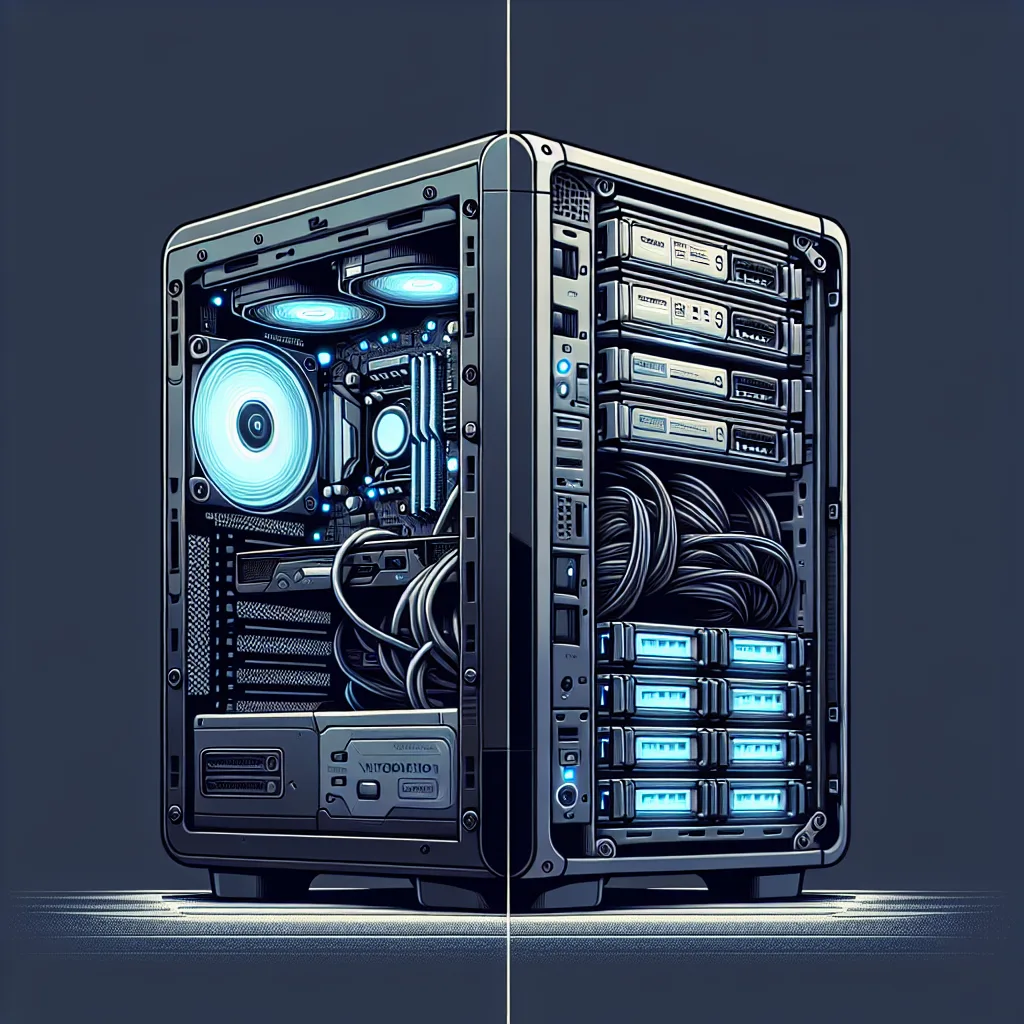Rethinking my home lab setup and the classic debate: one beefy server or two specialized machines?
My Home Lab Is a Mess. Is It Time to Split It Up?
I’ve hit that classic crossroads that many tech tinkerers eventually face. My all-in-one server, which started so simply, has become a bit of a tangled mess. It’s got me seriously thinking about my home lab setup, and whether it’s time for a major restructure. I have two machines—one new and powerful, one older and gathering dust—and I’m trying to figure out the best way to use them both. Maybe you’re in the same boat.
Here’s My Current Home Lab Setup
Right now, my entire operation runs on a slick little Beelink Mini PC. It’s a SER5 MAX with a Ryzen 7 6800U processor, and it’s been a fantastic workhorse. It’s running Unraid and handles everything: my NAS, Plex for media streaming, the whole suite of *Arr containers, a personal website, and a few home automation apps.
The storage is a bit… unconventional. The Beelink has two zippy 1TB SSDs inside, but all my media lives on four big hard drives in a 4-bay DAS (Direct-Attached Storage) enclosure that’s hanging off the mini PC via a USB cable. It works, but it feels a bit precarious. And in the corner, my old gaming PC—a respectable AMD Ryzen 7 1700—is sitting completely idle. It feels like a waste of potential.
The Big Idea: A Split Home Lab Setup
So, I’ve been sketching out a new plan. Instead of one machine doing everything, why not give each computer a specialized job? It seems cleaner and more logical.
- The Dedicated NAS: My older Ryzen 7 1700 machine would be pulled out of retirement. I’d move the four hard drives from the DAS directly into the PC case. It has the space and the SATA ports, after all. Then, I’d install a dedicated NAS operating system like Unraid on it. Its sole job would be to store files safely and serve them over the network.
- The Dedicated Virtualization Host: The powerful Beelink Mini PC would be freed from storage duties. I’d wipe it and install Proxmox on it. With its fast processor and internal SSDs, it would become a dedicated hypervisor, running all my virtual machines (VMs) and containers like Plex, my website, and other apps.
Is This a Better Home Lab Setup? Weighing the Pros and Cons
This is where the real questions come in. Splitting roles sounds great in theory, but is it actually a good use of my hardware? I’ve been weighing the pros and cons.
The Upsides:
- Simplicity and Stability: Each machine has one clear purpose. If I need to reboot my Proxmox server to test a new app, my NAS and all its files stay online, completely unaffected.
- Better I/O Performance: A DAS connected over USB is a classic bottleneck. By moving the hard drives into the older PC with native SATA connections, my storage performance should be much more reliable. No more worrying about a USB cable getting jostled.
- Focused Resources: The Mini PC’s fast CPU and SSDs are perfect for running applications, while the older PC is more than capable of handling file-serving tasks. Each machine gets to play to its strengths.
The Downsides (and My Rebuttals):
- Power Consumption: This is my biggest worry. The old Ryzen 7 1700 will definitely use more power at idle than the super-efficient 6800U in the mini PC. But how much more? After some research on sites like ServeTheHome, a great resource for this kind of hardware, the consensus is that while it will be higher, it might not be as dramatic as I think, especially at idle. The stability gains might be worth a few extra dollars on the power bill.
-
Is 8GB of RAM Enough? The old machine only has 8GB of RAM. Is that enough for a dedicated Unraid NAS? For my plan, the answer is a resounding yes. Since all the heavy lifting (Plex transcoding, VMs, etc.) is moving to the Proxmox server, the NAS will just be… a NAS. It will serve files. Unraid itself is very lightweight, and 8GB is plenty for basic file storage and maybe one or two very lightweight utility containers.
My Verdict: I’m Splitting My Home Lab
After thinking it through, I’m going for it. The proposed home lab setup just makes more sense.
The current all-in-one approach is convenient, but it’s also a single point of failure and creates performance bottlenecks. Separating the roles of storage and services feels like a more mature, robust architecture for a home lab that’s growing beyond a simple hobby. The increase in power consumption is a valid concern, but one I’m willing to accept for the significant gains in stability, performance, and peace of mind.
The plan is set as of August 2025. The old Ryzen will soon be humming away as my dedicated Unraid NAS, and the Beelink Mini PC will become a pure Proxmox virtualization server. It’ll be a fun weekend project, that’s for sure.
Every home lab is a personal journey, a constant evolution of hardware and software. This feels like the right next step for mine. It’s about creating a system that’s not just powerful, but also resilient and easier to manage in the long run.
What do you think? Have you ever considered splitting your own setup? I’d love to hear your thoughts and experiences in the comments below.
